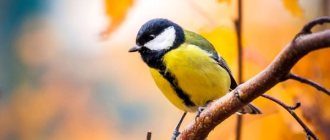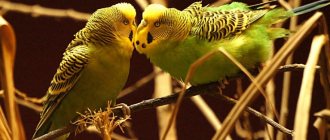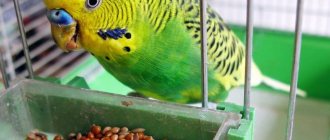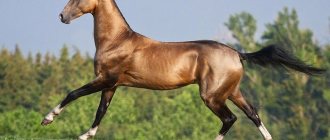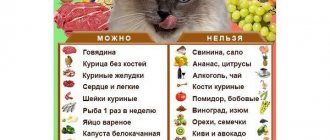Wood Accentor
It is confused with the forest pipit, warbler, and warbler. The Accentor is one of those birds that only ornithologists know, although it is common in forests. Hunters come across birds along with goldfinches and buntings.
The bird's appearance is inconspicuous. The plumage is brown-gray. The size is small. The body weight of the Accentor does not exceed 25 grams. Many people confuse a bird with a sparrow. There is a deal of truth in it. Accentor belongs to the order Passeriformes.
The Accentor feeds on insects. This prompts the bird to fly south. However, the bird stays until the coldest weather and returns early in the spring. True, this backfires on the Accentor. Having arrived, the bird immediately lays eggs. There is no vegetation yet. It is impossible to hide the masonry. The eggs are eaten by predators. Chicks hatch only from the second clutch.
The Accentor's tolerance to cold is reinforced by its ability to change its protein diet to a plant-based diet. Instead of insects, the bird can eat berries and seeds. Therefore, in regions with a temperate climate, dunnocks do not fly away at all. Birds from the northern regions of the country are flocking to the south.
Few people know the Accentor, it is very similar to a sparrow, and is often confused with a more familiar bird
Why do birds fly away
The cuckoos are the first to leave our region. Behind them are swallows, and a little later - swifts. From late August to September, several species change to a warmer climate.
What are the reasons for bird migration? Birds fly away with the onset of cold weather. However, the main reason for their migration is not the change of season. The decisive factor is the lack of food. Thus, a cuckoo eats up to a hundred caterpillars in one hour, and during cold weather the insects disappear. Most of them die, leaving a large supply of eggs from which offspring will hatch in the spring. Some insects hide in secluded warm places.
In summer the stork feeds on small fish and frogs. In winter, he is not able to get food for himself, which is under the crust of ice covering the reservoirs. Birds that cannot get food for themselves fly south. They don't have any problems with food there.
Reed Bunting
Outwardly, it also looks like a sparrow and also belongs to the passerine order. The bird prefers to settle in the forest-steppes of southern Russia. In them, the bunting searches for thickets of bushes and reeds. They serve as a reliable shelter for the bird.
Buntings decide to stay in Russia for the winter by setting up a nest next to the farm. On private farms you can profit from grain all year round. Birds from the passerine order prefer oats. Hence the name of the birds.
Wood buntings from regions with harsh climates are “registered” as migratory birds From there the birds flock to western Europe or the Mediterranean.
Wren
This is a small bird with a clear voice. The power of an opera singer is hidden in a 10 cm and 12 gram body. The wren's trills are second only to those of the nightingales.
Listen to the wren singing
The bird is named the wren because of its choice of shelters. They become thickets of grass. It could be fern, reeds or nettles.
The wren has several subspecies. American ones are migratory. Russian birds are removed from their homes in hungry and excessively cold years.
The bird likes to roost in thickets of nettles, hence the name wren
Finch
With a length of 16 centimeters, the bird weighs approximately 25 grams. Accordingly, the finch's feathers are tiny, but worth looking for. This is what our ancestors thought. They picked up the blue and green feathers of finches as amulets for the hearth.
There is also beige-orange paint on the bird's body. The finch's breast feathers are "drenched" in it. There are black spots on the head, wings and tail.
There are white stripes on the bird's wings. This is a distinctive feature of finches. There are more than 400 species in the world. In Russia, the bird is considered one of the most common. Finches fly to Africa for the winter. Birds travel in small flocks.
Migratory birds fly after caterpillars, beetles, larvae, flies. Birds only have insects on their menu. True, the finches themselves are also in danger. The bird often becomes a victim of large predators due to carelessness while singing. Emitting trills, finches throw back their heads, ceasing to pay attention to what is happening around them.
Listen to the finch singing
The finch often becomes a victim of predators precisely while singing, as it becomes very distracted and throws its head back
Common oriole
The front half of her body is yellow, and her wings, tail and part of her back are black. There are varieties with a dark mask and a bright tail. These live in Africa. Russian orioles fly there only for the winter. In snowy expanses, birds lack caterpillars, dragonflies, butterflies and other insects. They are the basis of the oriole’s diet.
The names of migratory birds , as can be seen, are often associated with external features or related to nutrition and lifestyle. The last option is relevant for the Orioles. They often settle in willow thickets along the banks of water bodies.
However, linguists and historians associate the name of the bird rather with the word “moisture”. The ancient Slavs considered the oriole a harbinger of rain.
The oriole is considered a harbinger of rain
Crane
Appeared earlier than most birds. The crane family is more than 60,000,000 years old. Representatives of 15 species survived to the 21st century.
Cranes settle near swamps and fields cultivated by people. At the latter, birds feast on grains and seeds, and in reservoirs they catch frogs, fish, and drink.
Flocks of migratory birds south , lining up in a wedge. It is led by the strongest cranes. The flapping of their powerful wings creates upward air currents that help weaker, younger individuals fly.
Where do birds fly for the winter?
11.11.2018 03:36 5623
With the onset of autumn, many birds fly south to wait out the winter there. Before a long flight, they gather in flocks, rest and gain strength.
Birds that fly away to warm regions for the winter are called migratory birds. These include starling, oriole, wagtail, swift, swallow, lapwing, cuckoo and many others.
Most birds tolerate the cold calmly. The main reason why they fly to hot countries is the lack of food. For example, the stork eats frogs and small fish. In winter, reservoirs freeze and become covered with an ice crust. Therefore, he cannot get them from there. The cuckoo loves to eat insects. But in winter, insects hibernate and are not easy to find. Therefore, if the cuckoo does not fly south, it will remain hungry.
Birds that remain to spend the winter in their native lands are called sedentary birds. Such birds have adapted to find food even in winter. The jay feeds on acorns growing on oak trees. The crossbill eats seeds that it gets from fir cones. He is not at all afraid of the cold, so his chicks can hatch from eggs even on frosty days!
Migratory birds leave their native lands in different ways. Some will fly away in flocks, and some alone. Cranes and wild geese always fly in a wedge (like a triangle). This is an incredibly beautiful sight!
The places where birds spend the winter are completely different. Swallows fly to Africa. Their new winter habitat is Kenya. Blackbirds and starlings winter in Italy, Spain, France and Portugal. Lapwings and woodcocks stop in England, cranes in Egypt, wagtails in India, and swans in Greece. In addition to swallows, storks, ducks, cranes, nightingales and hoopoes also fly to Africa.
Birds in warm countries select the same natural conditions as in their homeland. Forest birds fly to where there are forests, steppe birds fly closer to the steppes, and birds that lived near reservoirs winter near lakes and rivers.
The record holder for flight distance is the Arctic tern. From the Arctic (north Pole region) it can fly for the winter even to Antarctica (South Pole), flying across our entire planet from north to south! This journey lasts about a month.
Some birds do not leave our country. For example, seagulls fly to the Azov and Black Seas for the winter, and the white owl leaves the tundra and flies to the steppes.
With the onset of spring, birds return to their native lands and delight us with their cheerful voices.
skylark
Painted in brown, brown, gray, yellowish tones. These colors help the lark to get lost among the fields it inhabits. Here, at the beginning of spring, larks make nests out of grass and thin branches.
Inconspicuous due to their camouflage color, larks are not distinguished by their size. The body length of the bird rarely exceeds 25 centimeters. But the lark has a clear, loud, pleasant voice. It indicates that a migratory bird is somewhere nearby.
Skylark singing
Larks go to warmer climes at the beginning of autumn and return by the end of spring. This indicates the intolerance of birds even to coolness, let alone cold.
What birds fly south?
According to statistics, more than 60 species of birds live in Russia, flying to warmer regions for the winter. Seasonal migrations are the prerogative of all migratory birds, without exception. Relocations take place both over long and fairly close distances. To understand which species of birds are migratory, it is necessary to understand that their migrations depend on what they actually feed on. Most of all insectivorous birds are found in nature. They are balanced by carnivorous and granivorous birds.
With the onset of cold weather, all insects, which many birds enjoy feasting on, disappear. In connection with this, birds have to fly to places where there is never snow, where the abundance of tasty insects does not end all year round. Such migratory birds include robins, thrushes, finches, jackdaws, rooks and, of course, the “spring messengers” - swallows.
Swallows feed on fairly large insects, including dragonflies and chafers. They catch them on the fly. They winter on the Mediterranean coast. It is curious that some of them even fly to hot Africa. Therefore, it is simply impossible to see swallows in Russia in winter.
In winter, rivers and lakes freeze, which poses a great threat, for example, to carnivorous herons that feed on frogs and fish. They also have to leave their native lands. “Vegetarians” who eat herbs and seeds also suffer, since in winter everything is covered with a white sheet of snow. One of the most famous “herbivorous” migratory birds are heat-loving cranes.
If you carefully observe the cranes, you will notice that already in September they are preparing to fly away. At this relatively early time for migration, they are already gathering in flocks. Cranes leave their native lands until spring, saying goodbye to people with their beautiful guttural cry. For complete objectivity, it is worth noting that not all types of cranes fly away. This is done only by those who are forced to nest and reproduce in the northern regions of Russia.
Martin
Urban, field and coastal species nest in Russia. All are migratory. Birds in the fall fly away 9,000-12,000 kilometers from their native places. Among passerines, which include swallows, these are the longest flights.
On the fly, swallows manage to eat flies, sleep and even drink. For the latter, you have to descend over bodies of water, scooping up moisture with your beaks at lightning speed.
Over the course of their history, swallows have become symbols of hope, lightness, and even symbols of countries, for example, Estonia. This state issued a platinum coin with a face value of 100 crowns. There are 3 swallows depicted on the banknote. They grab the branch with their paws. Two birds sit quietly, and the third spreads its wings.
Live nature. What birds fly to warmer climes in autumn?
09/16/2020 Scientist cat Animals
People say this: “The month of September gathers birds on the road.” And it’s not in vain that they say it! Before the cold weather sets in, in many regions of Russia, some species of birds leave them. In this article we will talk about which birds fly to warmer climes in the fall and why, in fact, they do this.
Gold autumn. Who is flying where?
Watching migratory birds in the autumn season is quite interesting. Cranes, ducks, blackbirds, and swallows usually fly to warmer regions for the winter. Moreover, among them there is a peculiar order. For example, swifts are the first to leave their native land, ducks are the last.
Already in September, cranes begin to gather in their flocks. This is how they prepare for a long journey. These beauties say goodbye to us until spring with their beautiful guttural cry, which carries so far in this clean autumn air that you are simply amazed!
In early October, geese set off on a long journey. People have this saying about them: “Geese drag winter-winter on their tails, and snow-snow on their nose.”
Swallows fly to the Mediterranean coast for the winter. The most desperate of them even fly directly to Africa!
What birds do you think fly to warmer regions alone in the fall? Right! These are kites, kingfishers, hawks, falcons and cuckoos. However, most migratory birds still leave their native lands in flocks. For example, ducks generally line up in an oblique row, and geese and cranes fly in a wedge.
What will autumn be like?
Depending on which birds fly to warmer climes in the fall, you can predict what it will actually be like! Let's consider this sign using the same cranes as an example.
- If you see a leisurely and measured crane flight, autumn promises to be warm.
- A quick and hasty departure - to an early and very cold autumn!
Why do birds fly south in autumn?
It would seem that the answer to this question is simpler than ever. But that was not the case, friends! Birds are leaving their native lands not only because of the coming cold weather! After all, if this were so, then why do sparrows and pigeons, as well as crows and tits, remain to spend the winter next to humans? Is their plumage more dense than that of the beautiful cranes? Of course not! It's not about the cold, it's about the nutrition!
Evolution has decreed that sparrows and pigeons have adapted to find food in garbage cans, garbage dumps and landfills. These “winter” birds are not afraid of either winter or autumn! Birds fly away (photo 1), which feed only on fish, insects and their larvae. After all, staying in their former lands for the winter is like death for them. There will be no insects or fish until spring (reservoirs are covered with ice). So poor migratory birds have to travel from one end of the globe to the other, thousands of kilometers away!
Long journey
So, now you and I, friends, know which birds fly to warmer regions in the fall and, most importantly, what makes them do this! In addition, they spend as much energy on their long flight as a person on a long journey. Many of us get tired after just a few kilometers, but birds generally have to cover a distance of two thousand kilometers without any stop! This is a real heroic act!
Source: fb.ru
animals, nature
Cuckoo
The question “cuckoo, how long do I have to live” is irrelevant in winter. The bird flies to southern Africa. By the way, only males cuckoo. Females of the species produce low-frequency sounds that are imperceptible to the human ear.
In terms of mating relationships, cuckoos are monogamous. Birds change partners. A male, for example, manages to fertilize 5-6 cuckoos per day. They prepare for mating in a unique way, choosing an area with an abundance of nests of other birds. The cuckoos throw their eggs into them and again go looking for a partner.
Listen to the voice of the common cuckoo
Which birds spend the winter?
Sedentary species of birds do not leave their habitats and do not fly to warmer regions for the winter. Having adapted to the living conditions of modern people and the temperature, the birds do not fly south, but remain, continuing to feed on food scraps collected from garbage cans and landfills.
Also, people themselves feed representatives of sedentary species using special feeders. Birds that do not leave their native land:
- tits;
- sparrows;
- woodpeckers;
- bullfinches;
- squints;
- crows;
- waxwings;
- nuthatches;
- pigeons
Klintukh
It belongs to the order Pigeonidae and outwardly differs little from city pigeons. However, the clintuh lives in light forests, and not in the industrial jungle. The feathered bird settles in the hollows of large trees. Therefore, the young growth of oak trees does not suit the pigeon. The bird looks for forests with powerful trunks.
Clints nest in hollows. Eggs are laid upon arrival from warm regions. Intolerance to cold is another difference from ordinary pigeons.
Klintukha can be confused with a dove due to its strong resemblance to it
Woodcock
This is a species of sandpiper. It differs from its relatives in its large eyes, “turned up” to the back of the head. The long beak also stands out. It is hollow inside, so it is actually lighter than it seems.
The woodcock needs a long beak to catch worms, insects, frogs and shellfish. The bird extracts them from the ground and silt. While looking for food, the bird spends most of its time on the ground.
The coloration of the sandpiper is variegated, but in natural tones. Brown predominates. Due to its plumage, the woodcock is easily camouflaged against the background of undergrowth and fields. Among those wishing to profit from a sandpiper is a person. Woodcock has dietary, tasty meat.
When talking about migratory birds, the woodcock deserves mention. In September, all birds in the population leave the Russian open spaces. Waders return in mid-April.
Due to its variegated coloration, the woodcock is perfectly camouflaged in marshy areas.
Tiemaker
A small bird with a white breast and beige back walks along sandy beaches near bodies of water. The bird's beak is orange with a black tip. They use it to catch worms, mollusks, and beetle larvae in the coastal zone.
With a body length of approximately 20 centimeters, the collared fish weighs 40-80 grams. You can meet the bird in the tundra and forest-tundra of Russia. In the fall, tie-tailed fish go to the south of Asia, America or Africa.
gray heron
The bird is large, reaching a length of 95 centimeters. The mass of the animal is 1.5-2 kilograms. The bird is protected because the population is declining. In Russia, red-listed herons die not so much from the hands of hunters as from the cold.
Many individuals risk remaining in the country for the winter. Gray herons survive years with little snow easily. Birds usually cannot “win” snowy winters with large snowdrifts.
It is difficult to understand which heron birds are migratory The same individual can stay in Russia one year and leave it the next. The birds go to Africa, to the Sahara desert region.
Gray herons are shy. Seeing danger, the birds take off from their place. At the same time, herons often abandon their chicks to the mercy of fate. The wren, for example, pretends to be wounded and, at its own peril and risk, carries predators along with it, protecting its offspring.
What birds are called migratory?
These are considered to be birds that migrate over impressive distances, sometimes even flying to other continents. It is a fairly common belief that this is done for one purpose - to fly to warmer climes, but this is not entirely true. Many are able to withstand even the most severe frosts, and the main reason is that with the advent of cold weather, access to food and water disappears. Therefore, the first thing you need to understand is that flights are carried out mainly by insectivorous birds and those whose home is open water. Here are some birds that make “travels”:
- swallows;
- storks;
- ducks;
- blackbirds;
- geese;
- swifts.
It should be noted that some large representatives can stay for the winter, provided that they find a suitable place with acceptable conditions, for example, a reservoir not covered with ice.
Small birds, as a rule, fly in flocks, with each species having its own flight “style”:
- line - this is how waders fly;
- wedge - geese and cranes;
- jamb - that's how ducks fly.
Some species fly in daylight, while others prefer to move at night.
Fieldfare
This is a blackbird. The bird is active, seems fussy, and constantly repeats “chuck, chuck, chuck.” The characteristic sound gives away the fieldfare. Most often, a din of many voices is created. Pairs of birds nest next to each other. There are usually 30-40 families of fieldfare in a colony.
Listen to the singing of the fieldfare
Birds settle in copses and parks. Approximately half of the individuals survive the winter in Russia, wandering from place to place in search of food. The other half of the blackbirds fly to Asia Minor and northern Africa.
Fieldfare have developed a unique way of protecting themselves from enemies. The birds spray them with their droppings. This is what blackbirds do, for example, with crows. The latter feast on both fieldfare and their eggs.
List of migratory birds
Since there are a lot of them, we present a list of the most famous representatives of the feathered world:
- martin;
- lark;
- landrail;
- song thrush;
- wagtail;
- fieldfare;
- lapwing;
- nightingale;
- oriole;
- robin;
- cuckoo;
- finch;
- heron;
- woodcock;
- gray flycatcher.
It is these birds that fly away from their places closer to autumn in order to return in the spring to breed.
Buntings are of interest: they used to be sedentary and fed in the stables all winter. However, due to the development of city life and the gradual decline of the countryside, there are fewer and fewer stables, so the birds had to switch to a migratory lifestyle.
With ducks, the situation is the opposite: in urban reservoirs, thanks to humans, there is now enough food, so they can spend the whole winter there, that is, they become overwinterers.
The world of migratory birds is very rich and diverse, many of them lead a completely unique lifestyle. However, sedentary birds are also of interest due to how they manage to adapt to unfavorable conditions and survive in a hungry winter. All that remains is to admire the logic and thoughtfulness of nature!
Sources:
https://www.8lap.ru/section/interesnye-fakty/tsaplya-pereletnaya-ili-zimuyushchaya-ptitsa/
https://zoolog.guru/pticy/volnye-pticy/opisanie-i-spisok-pereletnyh-ptic-kto-ne-ostaetsya-zimovat.html
Redstart
This is a passerine bird with a red tail. Its brightness is reminiscent of flames. Juvenile redstarts are really inconspicuous in color. It becomes bright by the age of one and a half years.
Of the 14 species of redstart, the nigella lives in Russia. With the exception of the tail, she has black plumage. From the south, males return to Russia first to build nests. Birds build them in thickets of bushes, hollows, and on tree branches. When the houses are ready, females and young animals arrive. As a rule, this is the beginning of May.
Redstarts feed on small insects. When the beak is free, the birds sing. It seems that the birds do this continuously. The redstarts managed to attract attention with their singing and coloring. In 2015, the species was declared bird of the year.
Listen to the voice of the redstart
In the photo there is a redstart bird
Warbler
A dense bird up to 11 centimeters long. There are 3 species living in Russia. They live everywhere except the Far East and Yakutia. In other territories, warblers make nest-huts.
Warblers have a pleasant voice timbre. Males especially love to sing during the nesting period. Trills are interspersed with whistling. You can listen to them at home. Warblers are easy to tame. In captivity, birds live up to 12 years. In nature, the age of birds is 2-3 years.
Listen to the voice of the warbler
Without being domesticated, the warbler flies south in mid-September. Birds return by early April.
Migratory birds
Birds are warm-blooded creatures. Their body temperature is forty-one degrees. Thanks to this, they would feel great on frosty days. So why do migratory birds fly away? Birds cannot stay over the winter because during the cold seasons it is almost impossible for them to get food. Some fly away due to the cold weather. They migrate to warm regions to preserve most of the individuals.
Migratory birds, that is, those who leave our area in winter and fly south, include many species of birds. These include lapwing and swallow, wagtail and chaffinch, robin and song thrush, oriole and redstart, tree pipit and lark, and chiffchaff.
Deryaba
Refers to blackbirds. The species is also called the great gray. Not all individuals fly south. Those who dare to stay switch in winter from protein food in the form of larvae and insects to frozen berries.
Deryaba is shy. Therefore, it is difficult to see the bird in nature, even though it is feathered and the size of a dove. The deryaba is the largest of its kind.
Mistle Thrush
Which birds fly to warmer climes first?
Insectivorous winged species leave their native lands first. Swifts fly high, where it is much cooler and insects begin to disappear faster. Further, swallows fly south.
Singing wagtails feed only on dragonflies, which they skillfully intercept in flight. Dragonflies, in turn, either die with the onset of cold weather or hide in secluded places, depriving the wagtails of food. At the beginning of autumn, these birds gather in flocks and set off at dawn. They return home at the beginning of spring.

